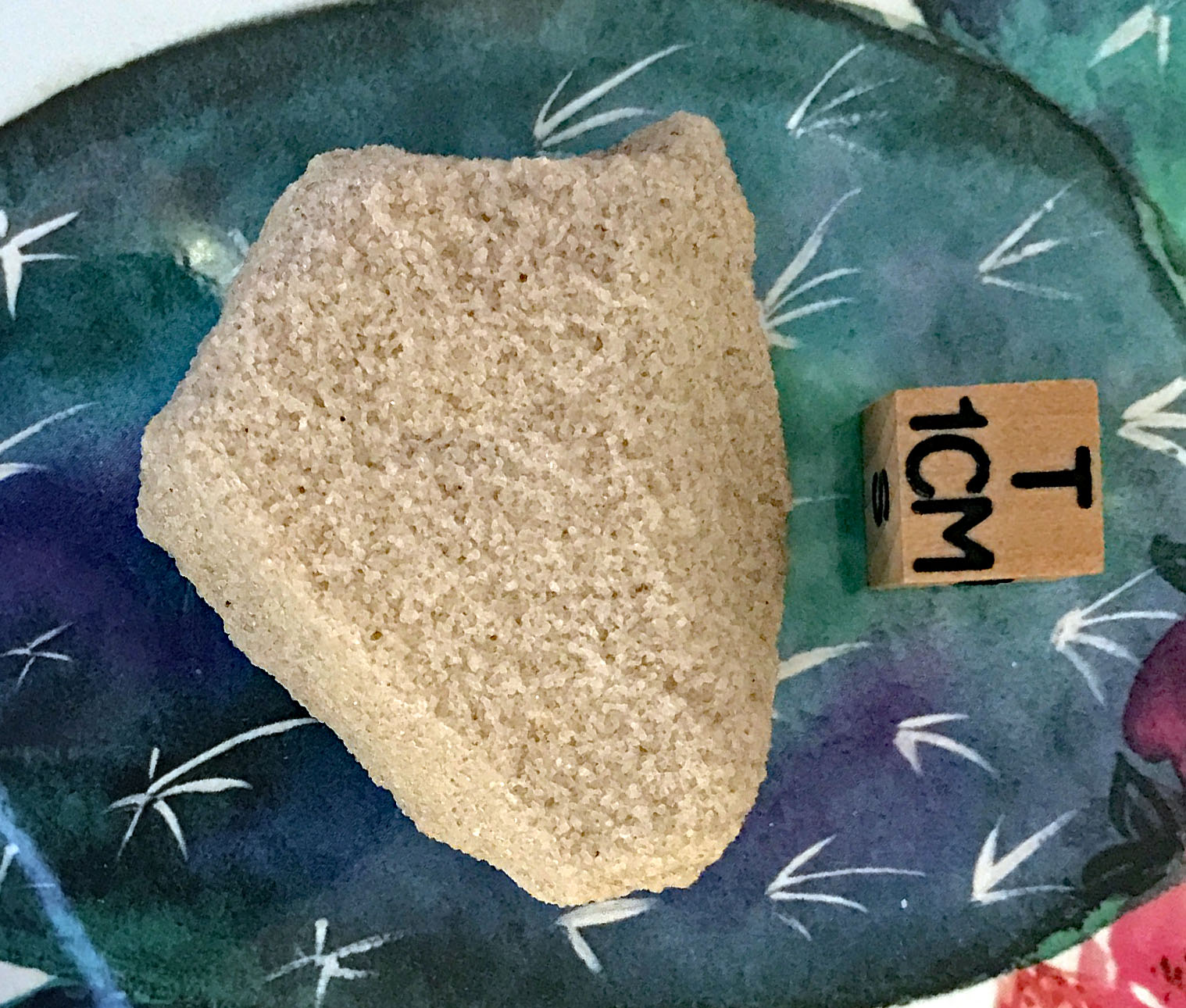|
Roll Overs:
#1
#2
#3
#4
#5
|

|
Impactitus
Crater created about 50,000 years ago in Coconino County, Arizona, USA, between Flagstaff and Winslow.
MPOD writes:
A gift from Gerhardt M. Thank you again!
This material was formed during the impact of the Canyon Diablo meteorite. The crystals are quite small and very jagged.
Photos 1-3 are of a clump of the material which is very friable. Photo 4 shows a vial of the disaggregated material. Photo 5 is a closeup of some of the material in the vial.
One form created by the impact is stishovite:
Stishovite is an extremely rare mineral forming only from the impact of a meteorite through the metamorphism of Quartz at extremely high temperatures.
Another form is coesite:
Coesite is a very rare mineral that forms in unique ultra high metamorphism usually as a result of meteorite impacts. It was named after American chemist Loring Coes, Jr. (1915-1978), who first synthesized Coesite in 1953 before it was naturally discovered in Barringer Crater in 1960.
These forms of silica reinforced the hypothesis by Barringer's and Nininger that Barringer crater was created by a meteorite. From WikiPedia:
Later research by Eugene Merle Shoemaker confirmed Barringer's and Nininger's hypothesis. A key discovery was the presence in the crater of the minerals coesite and stishovite, rare forms of silica found only where quartz-bearing rocks have been severely shocked by an instantaneous overpressure. It cannot be created by volcanic action; the only known mechanisms of creating it are naturally through an impact event, or artificially through a nuclear explosion.
In the 1940s an attempt was made to mine the Barringer Crater silica deposits. The Ball Brothers glass factory turned a lot of it into Ball Jars, the iconic jar for preserving fruit and other foods. |
|
|
| |
John Divelbiss
12/25/2020 10:35:10 AM |
20 plus years ago I was given a small piece of rim material that is similar, except full of carbon...including some of the quartz grains that seem to be darkened too. Cool impactite material...the specimen pictured is pure in its' makeup. |
Paul Swartz
12/24/2020 3:05:18 PM |
Twink, you're too kind :) |
Twink Monrad
12/24/2020 11:56:01 AM |
great photo and interesting information. You must have a really good photographer on your staff! |
| |
|